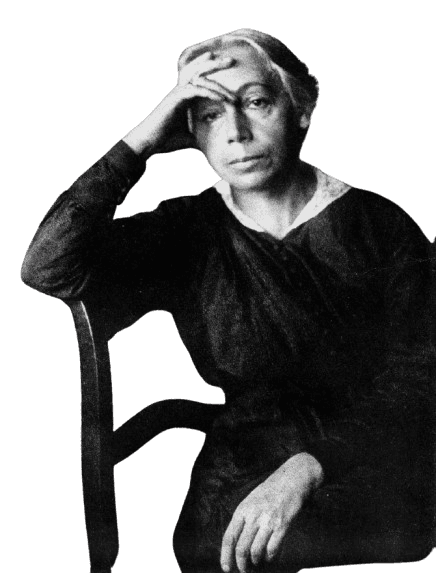Life and achievements
Early life
Käthe Kollwitz was born on July 8, 1867, in Königsberg, Prussia, now in Russia, in the Kaliningrad region.
She received her early education and strong intellectual and moral character from her father, Karl Schmidt, a Social Democrat who recognized her artistic abilities from childhood.
Her mother's side of the family had a highly regarded pastor in society, which made Kollwitz feel responsible for fighting for social justice.
At the age of twelve, Kollwitz started taking art classes, and her desire to depict the lives of laborers was quickly noted. During her early years, Kollwitz was inspired by the works of Max Klinger, a German symbolist who depicted social problems and people's suffering.
She attended different art schools in Berlin and Munich, where she learned painting and, later on, printmaking.
The theme of workers' lives was attractive to Kollwitz as she saw the suffering of the working people in Berlin, where her husband Karl Kollwitz, a physician, treated the needy.
These experiences influenced her attitude to art and her determination to depict the suffering of life.
Legacy
The main themes attributed to Käthe Kollwitz's work are the ability to evoke emotions and social awareness.
Her works, especially those focusing on tragic aspects of wars and the suffering of the working class, are a lasting record of the price that people pay for wars and social injustices.
Kollwitz's art has been very personal and political and has inspired many generations, especially those who work for change.
She focused on the issues of women, children, and the working poor, and her work still has a message of injustice and suffering in contemporary society.
Kollwitz also influenced the art world in other ways: she was the first woman to be elected into the Prussian Academy of Arts in 1919.
Her pacifist and socialist views, which made her an enemy of the Nazi regime, were a part of her legacy.
Some of her paintings, like the War Cycle and her later series Death, are related to mourning and grief, including her grief over losing her son, Peter, during World War I, which she portrayed in some of the paintings.
Kollwitz's impact was not restricted to the art world; she also touched the political sphere.
Her anti-war posters included Never Again War and Germany's Children Starving, symbolizing the pacifist and socialist movements in Germany.
Even during the Nazi regime, Kollwitz did not change her attitude and continued to be a voice for peace and social justice.
Today, her artworks are exhibited in the world's most prestigious museums, and her contribution to the development of social realism and political art cannot be overestimated.
Milestone moments
Feb 21, 1898
The Weavers Cycle is presented for the first time at the Berlin Art Exhibition
The Weavers cycle by Käthe Kollwitz was first displayed at the Great Berlin Art Exhibition in 1898.
This series of etchings described the suffering of Silesian weavers during their rebellion against the poor working conditions.
The cycle was acclaimed for its emotional and social impact despite not being awarded by Kaiser Wilhelm II.
The Weavers cemented Kollwitz's status as an artist passionate about social justice and marked a turning point in her work.
Oct 23, 1908
The Peasant War Cycle is a cycle of paintings which was never completed
After six years of hard work, Kollwitz finished her second major cycle – The Peasant War in 1908.
The series, which depicted the revolt of 16th-century German farmers, built upon her themes of defiance and struggle.
This series was one of Kollwitz's most technically and thematically accomplished due to her use of light and shadow and her emotional intensity.
The cycle also reinforced her as one of the leading artists who focused on the struggle of the working class.
Apr 25, 1914
Loss of Her Son Peter in the First World War
Kollwitz's son Peter died in October 1914 during World War I as a soldier of the German army.
This personal loss greatly affected her work, as she was able to pour her emotions into some of her most moving pieces, such as The Grieving Parents sculpture.
It was after the death of her son that she became even more committed to pacifism, and this is reflected in her anti-war works, which would define her later career.
The death of her son was always painful to her, and this forced her to depict the hopelessness of war and the extent of its suffering.
Jul 25, 1923
The War Cycle
From 1922 to 1923, the artist made her most famous anti-war work, the War Cycle, which included seven woodcuts.
This powerful cycle, including works such as The Sacrifice and The Parents, depicted the impact of the Great War on families and society as a whole.
These works are mighty and straightforward and express the raw sentiments of a generation affected by the post-war period, and Kollwitz became a prominent symbol against militarism.
War remains one of the most potent anti-war works of art of the twentieth century; it reflects Kollwitz's faith in art as a tool for social transformation.
